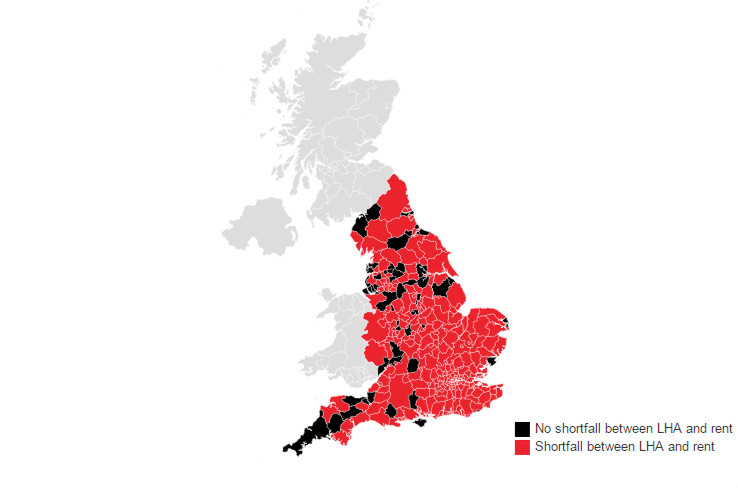Earlier this week, the Joseph Rowntree Foundation highlighted the growing cost of our attempts to shave money off the housing benefit budget. Its report, which found more than 100 families a day lost their home last year, demonstrated the misery and uncertainty faced by people on low-incomes in rented housing.
One woman in her 50s described living precariously, and how it had pushed her to the edge: “I’ve just got pressure on my mind the whole time, where am I going to go? What’s going to happen to me? …I tried to do away with myself three or four times because I didn’t know what way my life was going to go.”
The JRF’s report examines the sharp increase in evictions over the last 12 years and its consequences. Following a period of falling homelessness applications, since 2010 they have risen again as welfare reform has kicked in. Meanwhile the number of households living in temporary accommodation has risen to more than 77,000.
As the report highlights, tens of thousands of social and private tenants were evicted from their properties in 2015. Many have been forced to move because their rent became unaffordable, their property was in poor condition, or there was a landlord dispute. And our recent Shut Out report shows that often, low-income families are subsequently hit with the double-whammy of being unable access a new home – and are therefore vulnerable to homelessness.
What is the reason behind these problems and how can we tackle them?
The JRF agrees with Shelter that a key reason behind this housing insecurity is the growing gap between housing benefit and local private rents. The Government froze housing benefit (known as Local Housing Allowance in the private rented sector) for four years from April 2016, following five successive years of cuts. So while rents have been rising year on year, benefit levels have fallen or stayed the same – making a bad situation worse.
As it stands, by 2020, there will be a shortfall between LHA rates and even the cheapest local rents in 83% of areas in England. This map shows just how bad the circumstances could get by 2020 if we don’t do something about it soon:
Figure 1: Areas in England where by 2019/20 there will be a shortfall between the two-bedroom LHA level and rents at the lowest quartile of the private rented market

Beyond the statistics, Shelter sees every day the human cost of shutting low-income households out of the private rented sector:
- Increasing homelessness
- Families stuck in temporary accommodation for years
- Councils unable to help people into a new home
- Families forced into poor condition housing
That’s why we are calling on the Government to not go ahead with the final two years of the LHA freeze. In order to tackle homelessness, part of the solution has to be supporting low-income households to access a proportion of the private rented market.
Without an adequate welfare safety net, it will be impossible for any Government to solve our growing homelessness problem.
